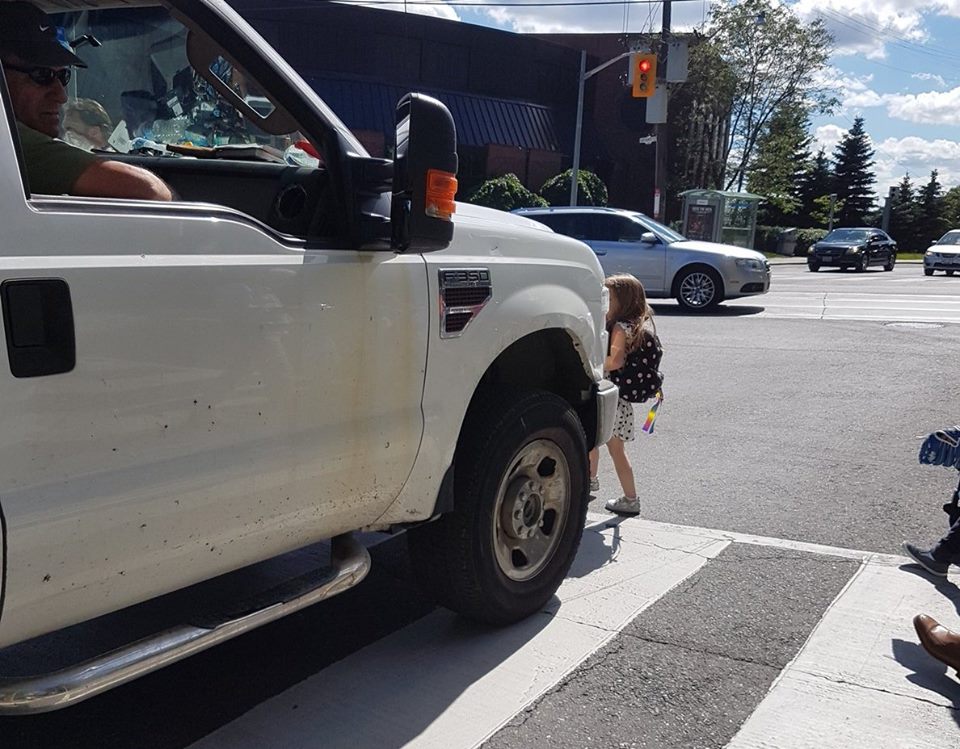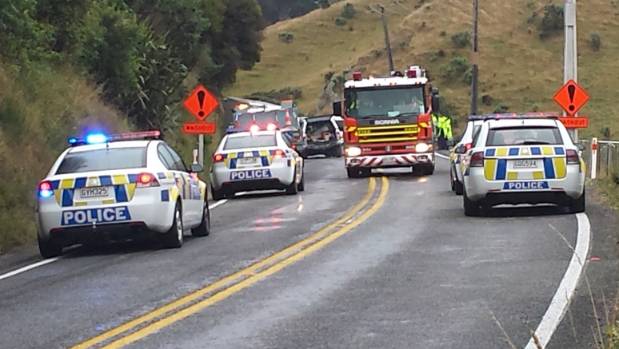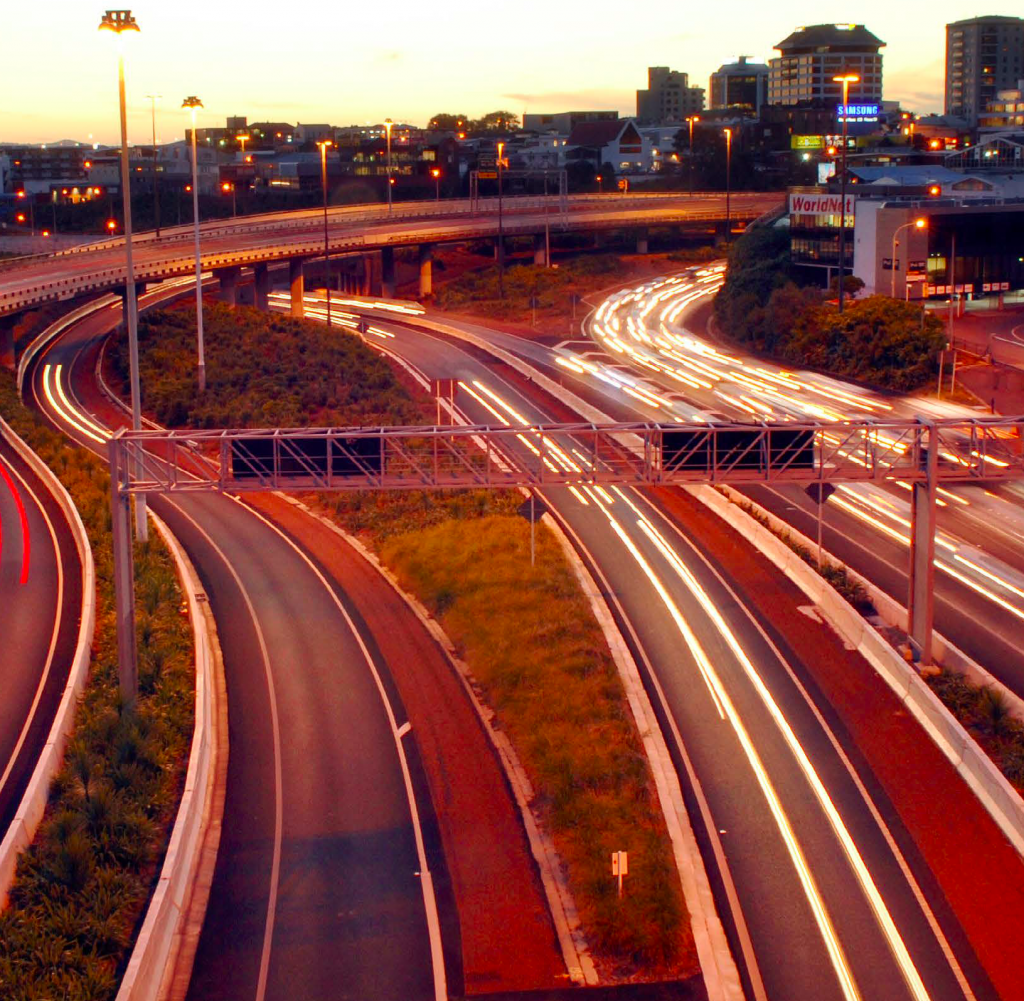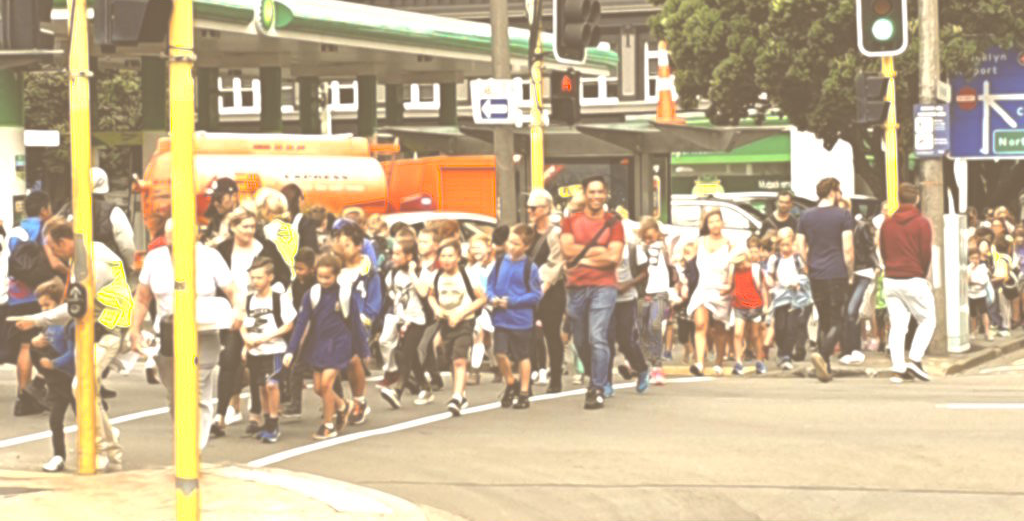Road To Zero: submission guide LAST CHANCE TODAY WEDNESDAY!
Quick! The best ten minutes you’ll spend today – less death in our times!
Today is the last day to get your two cents in on “Road To Zero”, Ao-NZ’s new road safety strategy. It’s based on the excellent Vision Zero.
We’ve written about that before: the starting proposition that no loss of life is acceptable on our roads, and that human life and wellbeing must never be traded off against other priorities. To start our thinking that way is the fundamental shift, and while Vision Zero is not about actually achieving zero deaths it’s the attitude shift that makes achievable really significant drops in road death.
And without that attitude shift, as Ao-NZ has demonstrated, you have another 20 years of “well gosh, we did do stuff…” *shrugs helplessly while the death rate rises.
Now the government is consulting on a new draft strategy for 2020-2030 that manifests Vision Zero thinking for Ao-NZ. It’s officials and politicians asking “what does The Public think?”
It’s now THE LAST DAY to get in your feedback (see here for why it’s important that you do: there will be resistance. Yes, mad, but there will).
Feedback is open until 5pm today Wednesday 14 August!
This thing is worth supporting.
It’s a strong vision, and our two cents is it’s great but is worth making even stronger.
Here’s an introductory video and links to the documents. And here’s the full consultation document. Because if you’re reading to here you are probably keen but don’t have time to do a full read through…
- This link will open the feedback form, in a new tab.
- There are about 28 questions, and it might take up to 10 minutes to answer them – note that the form won’t save your answers, so you need to do it in one sitting.
- You can also upload a document at the end.
Not sure what to say?
See our suggestions below. Take them or leave them as you please, but TW reckon this is what the officials and politicians need to hear.
At the very least, the direction of this strategy deserves our strong support – so if you really have no time, just whip through and say SUPPORT for all the things, except the target question (2.) where the best answer is “go higher”!
Our quick feedback guide
Question 1. VISION
Our proposed vision for road safety is: ‘a New Zealand where no one is killed or seriously injured in road crashes’.
To what extent do you support the proposed vision?
Strongly support
Question 2. TARGET
As a step towards achieving this vision, we propose a target of a 40 percent reduction in deaths and serious injuries by 2030. What do you think about this target?
Not high enough
TW comment: yes this target is a pragmatic one based on what’s feasible, and that it will save hundreds of lives, so of course you should support it. In principle, however, the only ethical level of harm to plan towards is zero. To ensure steady and effective progress towards the stated goal, they should have interim targets – e.g. for every three years.
Questions 3 through 10 address the guiding principles for the new road safety strategy
Q 3. PRINCIPLE 1. We plan for people’s mistakes.
Strongly support
Q 4. PRINCIPLE 2. We design for human vulnerability.
Strongly support
Q 5. PRINCIPLE 3. We strengthen all parts of the road transport system.
Strongly support
Q 6. PRINCIPLE 4. We have a shared responsibility for improving road safety.
Strongly support
TW comment: While we can all play our part, some bear more responsibility than others. For example, those in charge of larger vehicles have greater responsibility because those vehicles can do more harm. Adults have more responsibility than children. Those who design the roads have responsibility for designing to protect all of us.

Q 7. PRINCIPLE 5. Our actions are grounded in evidence and evaluated.
Strongly support
TW comment: We support evidence and evaluation, but crucially let’s not delay taking actions that are already proven to reduce risk, such as setting safe speeds, or using tactical approaches in urban areas to improve safety. Furthermore, evidence should also include “suppressed demand”, i.e. crashes that don’t occur because the conditions are so hostile that people do not use a specific transport mode or route, particularly for walking and cycling. Evidence must not become a reactive “black spot” approach.
Q 8. PRINCIPLE 6. Our road safety actions support health, wellbeing and liveable places.
Strongly support
TW comment: This wider view of mobility is welcome and long overdue. Our transport system, especially in cities, has an outsized effect on the places we live in, and the lives we live. Safer streets are healthier streets. Road safety improvements have compounding effects well beyond getting from A to B in one piece.
Q 9. PRINCIPLE 7. We make safety a critical decision-making priority.
Strongly support
TW comment: Ethics demand that we no longer allow the system to trade people’s lives and wellbeing against metrics like efficiency or travel time savings. This means that the benefit-cost-ratio system must make good road safety practices a gateway test as to whether a project can be funded (rather than treating crash costs and human injury costs as a negative that can be directly off-set with other benefits).
Questions 11 through 15 are about Focus Areas for the new road safety strategy
Q 11. FOCUS AREA 1: Infrastructure and speed.
Strongly support
TW comment: Both infrastructure and speed matter. Safer speeds should be one of the first tools we reach for. It will take time and money to improve every road to match the currently posted speed, whereas setting safe speeds and communicating the reasons to the public are actions that can and should be taken immediately.
When it comes to investing in better infrastructure, budget and ‘business as usual’ must not become a barrier to better safety. In cities especially, the most affordable investments – with the greatest return on investment – are also the most valuable for protecting vulnerable road users.
The Road to Zero strategy should thus encourage all parts of the transport network to seek out smart and speedy opportunities to improve walking and cycling safety, swiftly and effectively.

For example: 1) take a ‘complete streets’ approach to scheduled road renewals – leveraging this regular investment to ensure that every street that is repaved is simultaneously made safer for walking and cycling. 2) embrace proven tactical and iterative approaches to designing safer streets, allowing safety projects to be started sooner, installed faster, and improved over time.
We would add that better safety includes safe and appropriate volumes as well as speeds. This can be achieved by a road hierarchy with different volumes and speeds for different classes of road, and treatments that filter traffic (as affordable as bollards, for example). Low traffic volume and low speed streets will facilitate more local trips on foot and on bike by ensuring a safer context for all-ages active travel, as well as creating ‘feeder’ links to the wider network of protected cycle lanes and separated bike paths.
Q 12. FOCUS AREA 2: Vehicle safety.
Strongly support
TW comment: Please define safety with regard for people outside as well as inside vehicles – given the greater risk posed to pedestrians, cyclists, motorcyclists and mobility users, vehicle designs should prioritise features such as mandatory underrun protection and better black spot visibility designs for trucks, pedestrian impact crumple zones for cars, etc. Please also include safety factors such as pollution, noise, and greenhouse gas emissions, which have a cumulative and longterm deleterious effect on public health and wellbeing.

Q 13. FOCUS AREA 3: Work-related road safety.
Strongly support
TW comment: This must be a top priority for employers, given the potential and actual harm from vehicle use. Please, however, make sure that there are no unintended consequences such as a perceived pressure to discourage staff from travel modes perceived as “unsafe”, such as cycling or walking to work or meetings. (A simplistic focus on “avoiding unsafe activities” can occur if measures are badly targeted or communicated, because people are people, .)
Q 14. FOCUS AREA 4: Road user choices
Strongly support
TW comment: Driving is a privilege with serious responsibilities, not a right. Particular risks to people on bikes are posed by drivers distracted by using phones, red-light runners, and careless driving and parking across footpaths and driveways (the latter especially dangerous for children, as well as other footpath users) and cycle lanes/rori iti. These behaviours deserve targeted strategies of their own.
Q 15. FOCUS AREA 5: System management
Strongly support
TW comment: say things like…
In particular, please ensure you deliver on previous work in the area of road safety, like the full recommendations of the Cycling Safety Panel. (These are commitments that several previous governments have made and re-made)
Also, please gather a wider range of road safety evidence from underrepresented vulnerable road users. For example, we know that near hits – and even crashes causing injury – are widely underreported by people walking and people on bikes, and are likely to have a disproportionately discouraging effect on travel choices. Please urgently fill this data gap.

Q 16. Do you have any final comments about our focus areas?
TW comment: The strategy is missing a key opportunity in shifting journeys to safer modes by prioritising investment in public transport and cycling, walking, and micromobility-friendly infrastructure, so more people have more alternatives to private car journeys. We also reiterate the urgent need for fast, transformative ways to deliver better infrastructure for vulnerable road users at scale and at pace, for example by actively seeking opportunities to leverage road renewal budgets and use tactical approaches to street design.
The last two questions are about Actions
Question 17 asks you to nominate three Action Plan Priorities.
We’d choose these three:
- Introduce a new approach to tackling unsafe speeds
- Invest in safety treatments and infrastructure improvements
- Enhance the safety and accessibility of footpaths, bike lanes / rori iti and cycleways
Question 18 asks for suggestions about other actions to be considered for future action plans. So…
TW suggestions:
- Make it a priority to move more people towards safer and healthier travel modes, such as public transport, active transport, and micromobility. (“Mode shift” in the practitioners’ parlance.)
- Reduce vehicular travel demand (including by improving accessibility) and encourage shorter trips to reduce everyone’s exposure to risk on the roads, using levers such as congestion pricing
- Prioritise safety improvements that give more independence and travel choice to those who cannot or do not drive and are currently not well-served by alternatives, including children, people with mobility challenges, and older people, to ensure full equity in our transport system.
Question 19 asks about measuring success.
We’ll say it again: interim targets please, to ensure steady progress towards the overall goal. We’d suggest adding the following indicators as measures of success, particularly in urban settings:
- Perceived likelihood of being caught when using a mobile phone while driving
- Perceived likelihood of being caught when running a red light
- Number of deaths and serious injuries of pedestrians and people on bikes
- Number of journeys moved to safer modes, including walking, biking, and public transport
- Km of safe cycleways added and footpaths improved
- Number of intersections made safer for active modes
- Vehicle kilometres travelled (because everyone’s exposure to risk is reduced by shorter and fewer car journeys – the safest trip is the one you don’t take cos you can get what you need without having to travel lots).
- Number of children walking, scooting and biking to school (as a meaningful measure of actual and perceived safer streets)
Question 20 allows you to upload a document with further feedback.
Questions 21 through 28 walk you through personal information, where you live, and how your submission will be used.
Hit Submit and yell DONEBURGER! You should feel proud. You’re helping make Ao-NZ’s roads less deathly.
Huge thanks to the brains at Bike Auckland for the thoughtful and well-researched advice for submitting.
Image credits:
- Banner image and motorway – Ministry of Transport
- Kid with truck – Twitter user Tomflood1
- Haywards Hill crash – Peter Sinke
Leave a comment